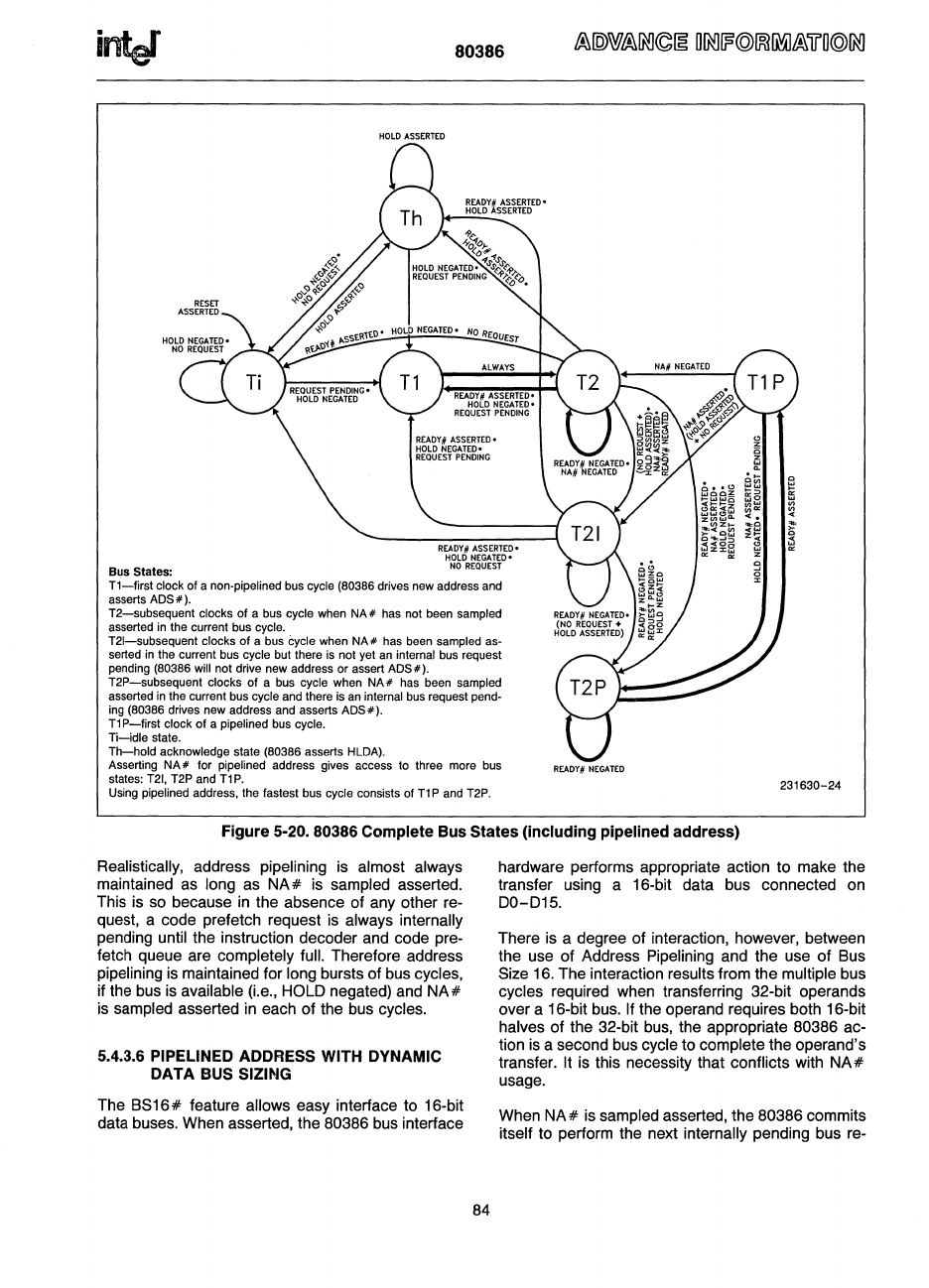
Bus States:
RESET
ASSERTED
80386
HOLD
ASSERTED
READY#
ASSERTED-
HOLD
NEGATED-
NO
REQUEST
T1-first
clock of a non·pipelined bus cycle (80386 drives new address and
asserts
ADS
#).
T2-subsequent
clocks of a bus cycle when
NA
#
has
not been sampled
asserted
in
the current bus cycle.
T21-subsequent clocks of a bus cycle when NA # has
been
sampled as·
serted
in
the current bus cycle but there
is
not yet
an
internal
bus
request
pending (80386
will not drive new address or assert ADS#).
T2P-subsequent clocks of a bus cycle when NA # has been sampled
asserted
in
the current bus cycle
and
there
is
an
internal
bus
request pend·
ing
(80386 drives new address and asserts ADS#).
T1
P-first
clock of a pipelined
bus
cycle.
Ti-idle
state.
Th-hold
acknowledge state (80386 asserts
HLDA).
Asserting NA # for pipelined address gives access to three more
bus
states:
T21,
T2P and
T1
P.
Using
pipe lined address, the fastest bus cycle consists of
T1
P
and
T2P.
READY#
NEGATED
Figure 5-20. 80386 Complete Bus States (including pipelined address)
"
z
"
~
.
~
"
,,~
~~
ffi
~8
~~
~
<.
~"
~
<~
z!<
~
9
'E
231630-24
Realistically, address pipelining is almost always
maintained
as
long as
NA#
is sampled asserted.
This is so because
in
the absence of any other re-
quest, a code prefetch request is always internally
pending
until the instruction decoder and code pre-
fetch queue are completely full. Therefore address
pipelining is maintained for long bursts of bus cycles,
if the bus is available (i.e.,
HOLD negated) and
NA#
is sampled asserted
in
each
of
the bus cycles.
hardware performs appropriate action to make the
transfer using a 16-bit data bus connected on
00-015.
5.4.3.6 PIPElINED ADDRESS WITH DYNAMIC
DATA
BUS SIZING
The BS 16 # feature allows easy interface to 16-bit
data buses. When asserted, the
80386 bus interface
84
There is a degree of interaction, however, between
the use of Address Pipelining and the use
of
Bus
Size 16. The interaction results from the multiple bus
cycles required when transferring 32-bit operands
over a 16-bit bus.
If the operand requires both 16-bit
halves
of
the 32-bit bus, the appropriate 80386 ac-
tion is a second bus cycle to complete the operand's
transfer.
It is this necessity that conflicts with
NA#
usage.
When
NA#
is sampled asserted, the 80386 commits
itself to perform the next internally pending bus re-


















